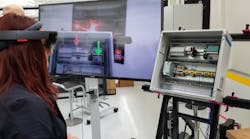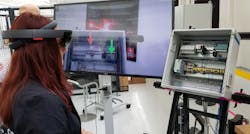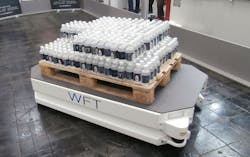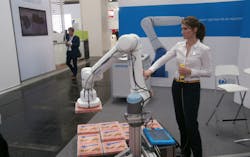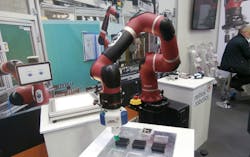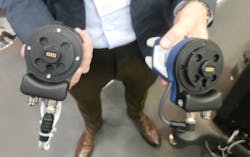Robots have been many the assembly line for decades. They handle chores like lifting cars or welding that would be unsafe or difficult for their human counterparts. These robots are often placed behind shields or at least light curtains that prevent unwanted interaction with people.
Not all robotic interactions can be performed in isolation. Enter the cobot or cooperative robot. These are robots designed to work in close quarters with people doing chores that do not deal with heavy or dangerous items. Likewise, training cobots is often easier since humans can interact directly rather than using a programming language or scripting system.
The other tool that is starting to affect the way people work in factories is augmented reality (AR). This allows users to see information that would otherwise reside on screens or paper. AR usually makes a process faster and more accurate. It can also be used with digital twin technology where a device model can be presented using AR.
Combining AR and cobots can lead to some interesting applications and further enhance robot and human interaction. These types of systems are still in the research phase, while AR and cobots are already in general use. AR examples include Scope AR’s WorkLink and Google Glass.
Rittal is using augmented reality at its research center to assist in tasks such as wiring and debugging process control systems (Fig. 1). The company is taking advantage of Microsoft’s Hololens. Rittal is looking to integrate AR with its software, including the EPLAN platform builder. EPLAN can be used to design and model everything from wiring harnesses to control panels.
1. Rittal’s research labs are using augmented reality to help with wiring and debugging chores.
Using the AR system, a user can look at a panel and see what wire needs to be added and the path it should take. This information is currently found on paper that the user would need to read. The AR system can significantly reduce errors due to incorrect wiring by showing the user information in its visual context, and it speeds up the wiring process as well.
An AR-based solution can be used for training. It can also reduce training time because information is readily available during a process. Some AR systems even incorporate a camera that can be used by remote personnel to assist the user by seeing what is going on, as well as providing information and advice. AR systems that would be tied into cobots can provide details like the current status of the grippers.
Cobots come in many forms. Some can be set up in modular configurations like WFT Modular Individual Transport (MIT) system (Fig. 2). An MIT cobot can lift up to 500 kg. It comes with multiple drive and lifting options. Multiple cobots can be synchronized so movement is coordinated.
2. WFT’s Modular Individual Transport (MIT) system can operate individually or in a coordinated group of multiple cobots.
An MIT system can be equipped with sensors to avoid obstacles and aid in navigation. The system can be remote controlled or integrated with autonomous guidance systems. WFT support custom designs based on MIT.
Blue Danube Robotics AirSkin is a safety cover for robots and grippers (Fig. 3). It consists of soft sensor pads that can cover the desired areas. AirSkin is ISO 13849 Cat. 3/PLe safety certified and is ideal for ISO/TS 15066-compliant applications. As with most sensing systems, the AirSkin-equipped cobot can stop when a collision is detected.
3. Blue Danube Robotics’ AirSkin pads can tell a robot to stop moving when it comes in contact with a person or object.
The advantage of AirSkin is that it is easy to install on existing robotic equipment. It is tied into the robots stop button that is normally required. Of course, it is possible to integrated AirSkin into more advanced modes of operation.
Users do need to consider how a robot operates, as AirSkin is simply a sensor system. Long and fast movements can still be dangerous to a person even if a robot can stop its movement quickly.
Some robots are designed to be cobots from the ground up. This is the case with Rethink Robotics’ Sawyer (Fig. 4). This robot also senses contact with users, but via motor feedback versus AirSkin’s touch sensor. The lightweight arm has seven degrees of freedom (7DOF). It can reach 1,260 mm and handle precision work (± .1 mm). The Cognex Vision System can be embedded in the dripper, allowing it to identify objects.
4. Rethink Robotics’ Sawyer was designed from the ground up to be a cobot.
Sawyer’s ClickSmart family of grippers can be identified when they are connected to its arm, allowing the cobot to determine what actions will be performed (Fig. 5). This makes switching the cobot from one predefined task to another very easy. Sawyer may be tasked with doing a variety of jobs over the course of a couple days or weeks, versus conventional industrial robots that perform a single task forever.
5. Rethink Robotics Sawyer grippers can be identified by the cobot when they are installed so that the cobot knows what process it will be performing.
Cobots and AR are changing how designers address processes. Individually or together, these technologies are changing how industrial operations work.
